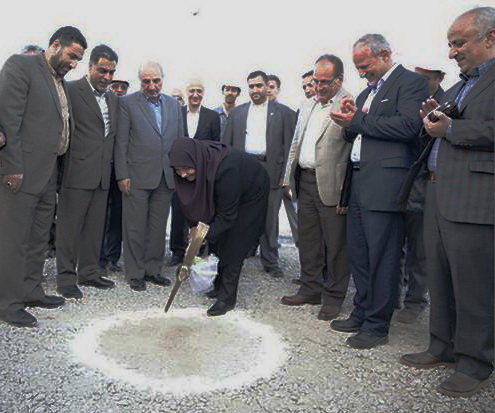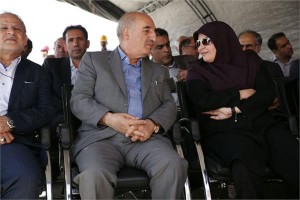Potassium Sulfate Plant Brick-laid in Urmia – West Azerbaijan

photo cortecy of NIPNA
A factory for the production of potassium sulfate with an output of 40 thousand tons per year was brick-laid in Urmia during last week’s provincial trip of President Hasan Rouhani to the West Azerbaijanon (Ref. news here)
The ceremony was noteworthy for having been headed by Marzieh Shahdaei, deputy oil minister for petrochemicals, as the first woman selected for the positions of the deputy minister in Iran in early 2016.
Besides potassium sulfate, the plant will produce 50 thousand tons of Hydrochloric Acid per year.
On the same day, the sulfuric acid plant of the Urmia Petrochemical Complex was also inaugurated.
 The unveiling ceremony was attended by President Hassan Rouhani via video conference, while Shahdaei and Adel Salim Nejad, CEO of Persian Gulf Petrochemicals Industries Co., attended the ceremony on site.
The unveiling ceremony was attended by President Hassan Rouhani via video conference, while Shahdaei and Adel Salim Nejad, CEO of Persian Gulf Petrochemicals Industries Co., attended the ceremony on site.
About Marzieh Shahdaei:
Marzieh Shah-Daei is an Iranian engineer and the current Executive Director of National Petrochemical Company, as well as “Vice Minister of Petroleum on Petrochemical affairs”
About Urmia:
Urmia is the second largest city in the Iranian Azerbaijan and the capital of West Azerbaijan Province. Urmia is situated at an altitude of 1,330 m above sea level, and is located along the Shahar Chay river (City River) on the Urmia Plain. Lake Urmia, one of the world’s largest salt lakes, lies to the east of the city and the mountainous Turkish border area lies to the west.
Urmia is the 10th most populated city in Iran. At the 2012 census, its population was 667,499 with 197,749 households. The city’s inhabitants are predominantly Iranian Azerbaijanis who speak the Azerbaijani language.There are also minorities of Kurds, Assyrians, and Armenians. The city is the trading center for a fertile agricultural region where fruits (especially apples and grapes) and tobacco are grown.
An important town by the 9th century, Urmia was seized by the Seljuk Turks (1084), and later occupied a number of times by the Ottoman Turks. For centuries the city has had a diverse population which has at times included Muslims (Shias and Sunnis), Christians (Catholics, Protestants, Nestorians, and Orthodox), Jews, Bahá’ís and Sufis. Around 1900, Christians made up more than 40% of the city’s population, however, most of the Christians fled in 1918 as a result of the Persian Campaign during World War I and the Armenian and Assyrian Genocides.












